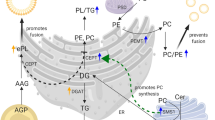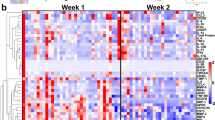Abstract
IN spite of study for over one hundred years, we still do not know how milk is secreted by the mammary cells1. One early theory of light microscopists was that the mechanism was holocrine, involving death and release of the whole cell as in sebaceous glands. Indeed, recent biochemical studies have shown that milk contains several intracellular components (such as citrate, enzymes and microsomes), although it is uncertain whether these are derived from secretory or duct cells or from phagocytic cells (neutrophil leucocytes and macrophages), which are known to migrate into milk from the blood and connective tissue. Later, the idea that whole cells are lost was rejected because the observed rate of mitosis was too small to account for the predicted rate of cell renewal. An alternative theory was that the process was apocrine—that only the apex of the cell became detached and that milk consists essentially of cell debris. Subsequent investigators considered this theory was not proven because what seemed in histological sections to be pieces of cytoplasm recently detached from cells could have been portions of neighbouring cells, the greater part of which lay out of the plane of section2.
This is a preview of subscription content, access via your institution
Access options
Subscribe to this journal
Receive 51 print issues and online access
$199.00 per year
only $3.90 per issue
Buy this article
- Purchase on Springer Link
- Instant access to full article PDF
Prices may be subject to local taxes which are calculated during checkout
Similar content being viewed by others
References
Linzell, J. L., Physiol. Rev., 39, 534 (1959).
Richardson, K. C., Brit. Med. Bull., 5, 123 (1947).
Bargmann, W., and Knoop, A., Z. Zellforsch. Mikrosk. Anat., 49, 344 (1959).
Helminen, H. J., and Ericsson, J. L. E., J. Ultrastruct. Res., 25, 193, 214 (1968).
Kurosumi, K., Kobayashi, Y., and Baba, N., Exp. Cell Res., 50, 177 (1968).
Paape, M. J., and Tucker, H. A., J. Dairy Sci., 49, 265 (1966).
Lascelles, A. K., Gurner, B. W., and Coombs, R. R. A., Austral. J. Exp. Biol. Med. Sci., 47, 349 (1969).
Author information
Authors and Affiliations
Rights and permissions
About this article
Cite this article
WOODING, F., PEAKER, M. & LINZELL, J. Theories of Milk Secretion : Evidence from the Electron Microscopic Examination of Milk. Nature 226, 762–764 (1970). https://doi.org/10.1038/226762a0
Received:
Revised:
Issue Date:
DOI: https://doi.org/10.1038/226762a0
This article is cited by
-
Morphological Analysis of Human Milk Membrane Enclosed Structures Reveals Diverse Cells and Cell-like Milk Fat Globules
Journal of Mammary Gland Biology and Neoplasia (2020)
-
Analysis of human breast milk cells: gene expression profiles during pregnancy, lactation, involution, and mastitic infection
Functional & Integrative Genomics (2016)
-
Molecular morphology of the digestive tract; macromolecules and food allergens are transferred intact across the intestinal absorptive cells during the neonatal-suckling period
Medical Molecular Morphology (2007)
-
Relations Between Udder Infection and Somatic Cells in Camel (Camelus dromedarius) Milk
Acta Veterinaria Scandinavica (1995)
-
Secretory membranes of the lactating mammary gland
Protoplasma (1990)
Comments
By submitting a comment you agree to abide by our Terms and Community Guidelines. If you find something abusive or that does not comply with our terms or guidelines please flag it as inappropriate.



